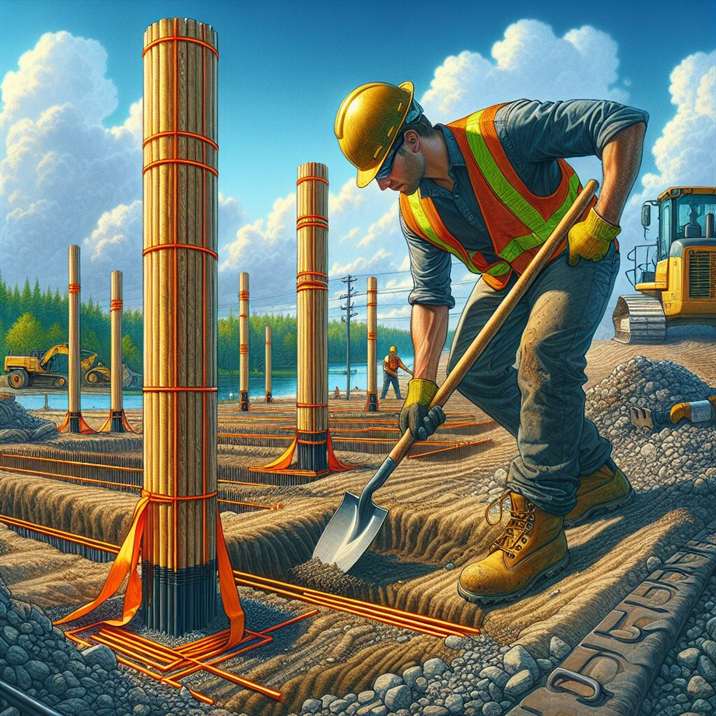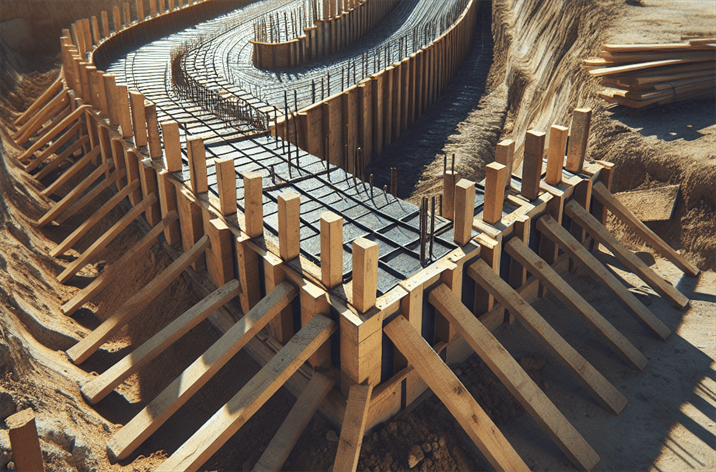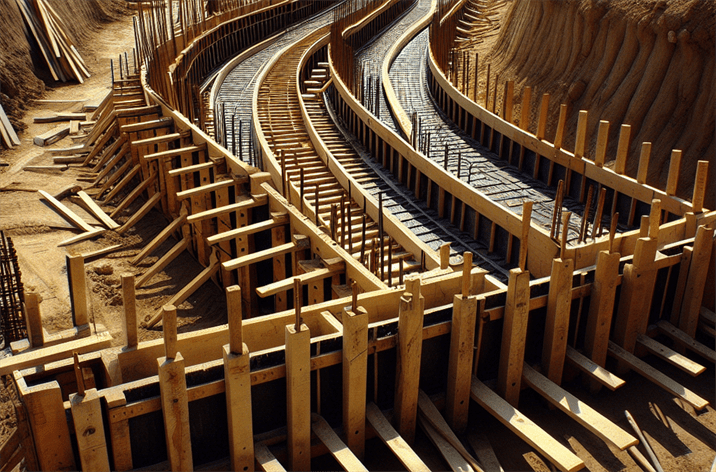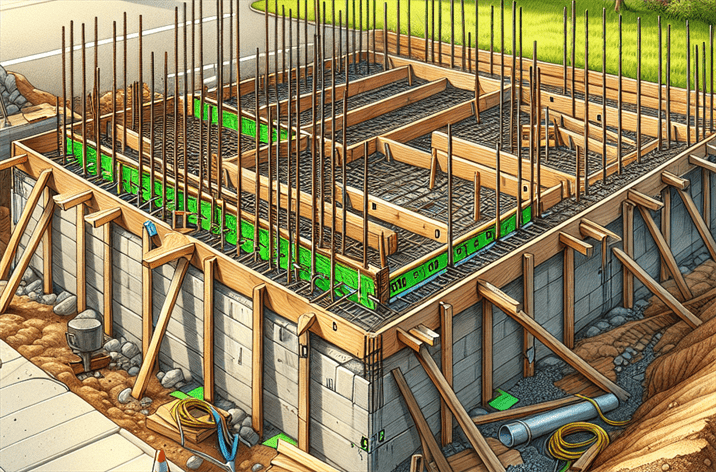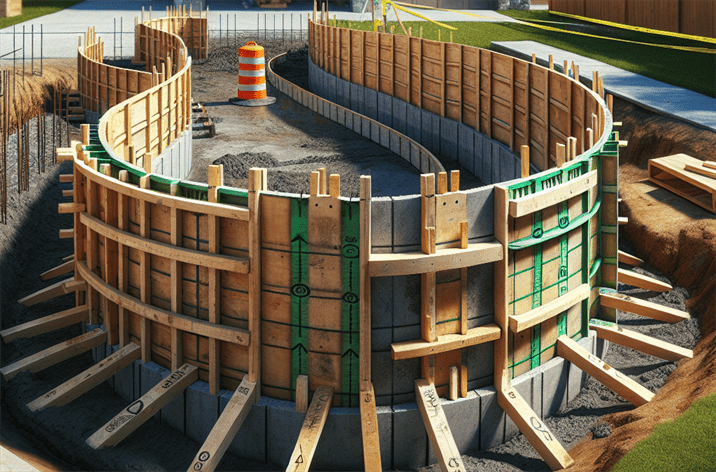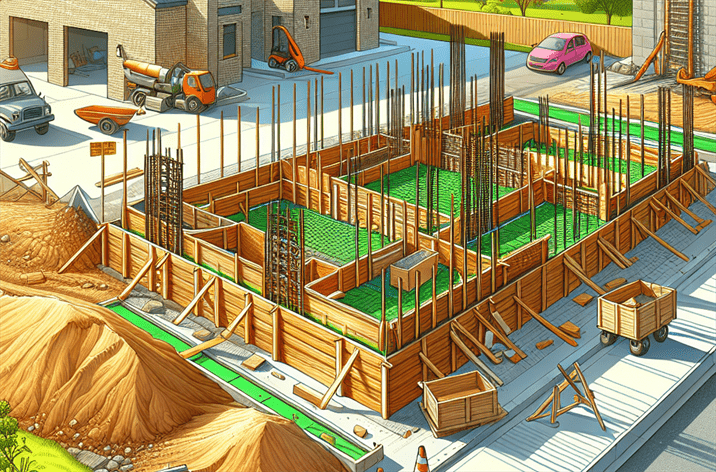Stakes and Lath: The Unsung Heroes of Construction
Introduction
When you think about construction, your mind may wander to heavy machinery, impressive cranes, and towering scaffolds. However, there’s a less glamorous yet equally crucial aspect of building that often goes unnoticed: stakes and lath. These simple tools play an essential role in ensuring the accuracy and integrity of construction projects. Did you know that improper layout and marking can lead to costly mistakes, potentially affecting timelines and budgets? According to industry statistics, up to 30% of project delays stem from errors during the planning phase, highlighting the need for precision tools like stakes and lath.
In modern construction, the use of stakes and lath has evolved into a science. From defining boundaries to assisting in the layout of buildings and landscapes, these tools are indispensable. Recent trends show that more contractors are investing in high-quality materials and innovative designs to enhance their construction accuracy. This article aims to provide an in-depth understanding of stakes and lath, including their definitions, applications, benefits, and the challenges faced in their use.
For a deeper understanding of the practical applications of these tools, check out our guide on how to stake out construction sites for maximum accuracy.
What are Stakes and Lath?
Definition
Stakes and lath are fundamental components used in construction to mark boundaries, guide layouts, and organize construction sites. Stakes are typically made from durable materials like wood or metal, and they are driven into the ground to indicate specific points or lines. Lath, on the other hand, is a thin strip of wood or other materials used to create a framework for various applications, including wall construction and surface support.
Historical Context
The use of stakes and lath dates back centuries. In ancient times, builders utilized rudimentary wooden stakes to mark out the foundations of structures, ensuring that their alignments were accurate. Over time, as construction techniques advanced, so did the sophistication of these tools. The introduction of lath in the 19th century revolutionized the way walls and ceilings were constructed, allowing for more complex designs and enhanced structural integrity.
The Importance of Stakes and Lath
Today, stakes and lath are vital in various construction contexts, from residential projects to large-scale civil engineering undertakings. They ensure that measurements are precise, boundaries are respected, and overall project layouts are adhered to. Without these tools, construction projects would face increased risks of errors, leading to inefficiencies and potential safety hazards.
Stakes and Lath in the Context of Civil Engineering
In civil engineering, the use of stakes and lath becomes even more critical. They help in the precise layout of roads, bridges, and other infrastructure projects. Engineers rely on these tools to establish reference points and ensure that structures are aligned correctly with existing plans.
Key Players or Contributors
Several companies have made significant strides in the development of stakes and lath products. Innovations in materials, such as eco-friendly options and enhanced durability, have emerged from industry leaders, making these tools more effective and sustainable.
For more insights, learn more about the benefits of using stakes and lath in construction.

How Does Stakes and Lath Work?
The Mechanics of Stakes and Lath
The process of using stakes and lath in construction is straightforward yet requires attention to detail. Typically, stakes are driven into the ground at key points marked on a site plan. These stakes serve as a reference for further measurements and are often connected by lath, which creates a visual grid that guides the construction process.
-
Setting Up Stakes: The first step involves placing stakes at designated points, based on the construction blueprint.
-
Connecting with Lath: Once the stakes are in place, lath is used to connect them, creating a framework that outlines the project’s dimensions.
-
Verifying Measurements: After setup, measurements are verified using level tools and measuring tapes to ensure everything aligns with the intended design.
Technological Foundations of Stakes and Lath
Modern advancements in technology have enhanced the effectiveness of stakes and lath. GPS technology and laser leveling tools now complement traditional methods, allowing for even greater accuracy. These tools can provide real-time data, ensuring that construction layouts are correct and minimizing human error.
Real-World Applications of Stakes and Lath
Numerous projects have successfully utilized stakes and lath to improve their construction processes. For instance, a recent urban development project in a metropolitan area relied heavily on these tools to accurately layout a multi-building complex. By implementing a systematic approach to staking and lathing, the project was completed ahead of schedule and within budget.
Case Studies
Case Study 1: Urban Development
In a recent urban development project, the integration of stakes and lath improved workflow and minimized errors. By utilizing GPS technology alongside traditional staking methods, the construction team achieved remarkable precision in site layout, resulting in a 20% reduction in material waste.
Case Study 2: Infrastructure Project
An infrastructure project involving a new highway used stakes and lath to delineate boundaries. This approach allowed for accurate grading and ensured that the road conformed to design specifications, significantly enhancing safety and performance.
Benefits of Using Stakes and Lath
Enhanced Accuracy
One of the primary benefits of using stakes and lath is the enhanced accuracy they provide. Properly set stakes and lath can significantly reduce errors in measurements, leading to a smoother construction process.
Cost-Effectiveness
Investing in high-quality stakes and lath can lead to significant cost savings. By preventing costly mistakes and rework, projects can stay on budget and maintain timelines.
Versatility
Stakes and lath are versatile tools that can be used in various applications, from landscaping to large-scale construction. Their adaptability makes them essential for contractors across multiple industries.
Sustainability
With the increasing focus on sustainable construction practices, eco-friendly stakes and lath options have become available. These products not only perform well but also minimize environmental impact.
Improved Communication
Using stakes and lath improves communication among team members. A visible layout helps all workers understand project boundaries and specifications, reducing confusion and enhancing teamwork.
Safety
Properly marked boundaries and layout diminish the risk of accidents on construction sites. By clearly indicating where work is to be done, stakes and lath enhance overall site safety.
For more insights into best practices, check out our guide on best practices for using stakes and lath in construction.
Challenges in the Use of Stakes and Lath
Weather Conditions
One of the significant challenges in using stakes and lath is the impact of weather conditions. Rain or heavy winds can displace stakes or lath, leading to inaccuracies. It’s essential to monitor weather conditions and secure materials properly.
Material Limitations
While stakes and lath are generally durable, they can be susceptible to deterioration over time, especially wooden stakes in wet environments. Opting for treated or alternative materials can mitigate these issues.
Human Error
Even with the best tools, human error remains a challenge. Proper training and adherence to best practices are crucial to minimizing mistakes during setup and measurement.
Cost Implications
While stakes and lath can save money in the long run, initial investment in high-quality materials and tools can be a hurdle for some contractors. However, this investment often pays off through increased efficiency and reduced errors.
Future Trends in Stakes and Lath
Technological Integration
As technology advances, the integration of smart tools in construction is becoming more prevalent. Future trends may see stakes and lath equipped with sensors that provide real-time data on positioning and alignment.
Sustainable Innovations
The construction industry is moving toward more sustainable practices. Innovations in materials, including biodegradable and recycled options for stakes and lath, are likely to emerge.
Customization
The demand for customized construction solutions is on the rise. Future offerings may include customizable stakes and lath tailored to specific projects, enhancing usability and effectiveness.
Automation
With the rise of automation in construction, future tools may include automated staking systems, reducing the reliance on manual setup and improving accuracy.
Conclusion
Stakes and lath may not be the most glamorous tools in the construction industry, but their significance cannot be overstated. They play a crucial role in ensuring accuracy, efficiency, and safety on construction sites. By understanding their applications, benefits, and challenges, contractors can better utilize these tools to enhance their projects.
As the construction industry continues to evolve, staying informed about the latest trends and innovations will be vital. From technological advancements to sustainable practices, the future of stakes and lath looks promising. Embracing these changes will not only improve project outcomes but also contribute to a more sustainable and efficient construction industry.
For more detailed insights, consider checking out our comprehensive guide on the essential role of surveying stakes in construction projects.
By leveraging the potential of stakes and lath, construction professionals can ensure their projects are built on a solid foundation—both literally and figur

